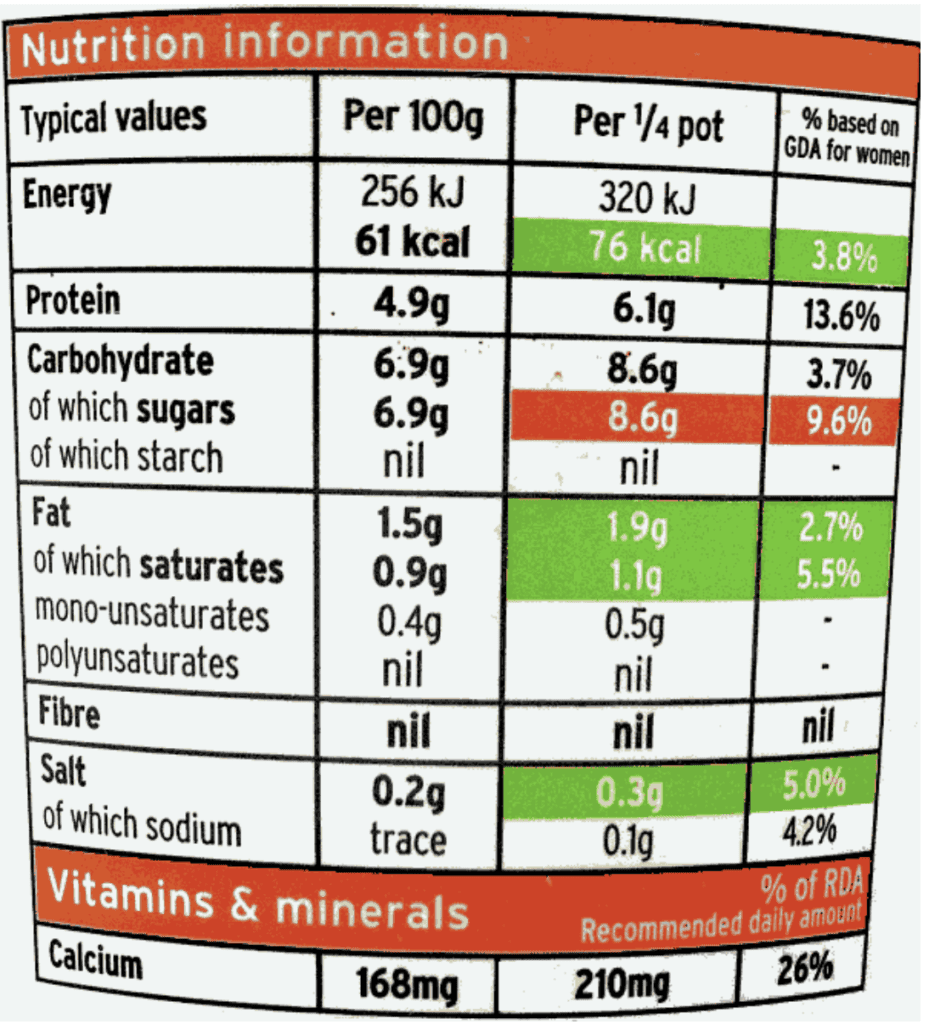
Learning to Read a Food Label?
The Nutrition Facts label is mandatory in the United States, Canada, and the European Union, among other countries. Its purpose is to provide vital information about the food product’s nutritional content to help customers make educated food purchasing decisions.
The Nutrition Facts label typically lists the number of calories per serving, the types of fat, protein, and carbohydrates included, the vitamins and minerals present, and the amount of fiber and sugar present. The label also includes the percentage of the daily value (%DV) for each nutrient, indicating the percentage of the RDI that is met per serving. The Nutrition Facts label may be a useful tool for those trying to manage their weight, reduce their risk of acquiring chronic illnesses, or just make better food choices. The information supplied on the label allows shoppers to compare products and make educated decisions based on their own tastes and dietary requirements.
How can we educate kids about what to look for on food labels?
The Nutrition Facts label, seen on the back of most packaged foods, provides important information about the food’s nutritional value. Consider these examples:
1. Traditional schooling
Nutrition education is a standard component of many school curricula. Teachers may instruct kids on the value of the Nutrition Facts label, how to decipher its contents, and how this information relates to the child’s overall health and well-being.
2. Mobile Apps and Video Games
There are a plethora of apps and games designed to educate kids on nutrition, including how to decode the Nutrition Facts label. Games for kids nowadays often include quizzes, puzzles, and simulations to keep players engaged.
3. Preparing meals and a menu
Getting children involved in the kitchen and the food preparation process may teach them a lot about nutrition and the need to read the nutrition facts label. A child’s understanding of food types, portion sizes, and smarter food choices may all benefit from reading labels.
4. Guided Shopping Trips
Taking kids shopping and showing them the ropes of reading the nutrition facts label is a great hands-on way to educate them about healthy eating. By pointing out different elements of the label and explaining what they suggest, parents and teachers may help children make more informed decisions about the products they purchase and consume.
5. Being a Model
Parents, caregivers, and teachers may set a good example for children by selecting nutritious foods for themselves and stressing the importance of understanding the information provided on the nutrition facts label. Young people are more likely to adopt healthy routines if they see the individuals closest to them doing the same.
6 Nutritional seminars
Workshops or programs on child nutrition that discuss the Nutrition Facts label may be offered by local health authorities or community groups. Sessions may include games, demonstrations, and discussions aimed at teaching children about nutrition in a positive and engaging atmosphere.
7.Educational Materials
Books, websites, and videos are just some of the resources available to educate kids about nutrition and the Nutrition Facts label. These resources often use kid-friendly language and visuals to help kids grasp the concepts and make wiser eating choices.
Keep in mind that it’s important to use age-appropriate language and teaching methods when explaining the nutrition facts label to kids. Making it fun, helpful, and relevant to their everyday lives may help youngsters establish healthy eating habits for the rest of their lives.
What are some basic facts about kid nutrition?
Here is some important data on children’s diets that you should keep in mind.
Adequate nutrition is crucial to a child’s growth and development.
A child’s growth and development are dependent on the quality of the food they consume; kids need a variety of carbohydrates, proteins, healthy fats, vitamins, and minerals to thrive. The first 1,000 days of life, from conception to age two, are the most important in terms of nutrition.
Long-term health may be affected by how a child eats while they’re young.
The health and happiness of children may be adversely affected by their diets and food preferences as they grow up. Chronic diseases such as obesity, heart disease, and diabetes may be prevented in part by encouraging healthy eating habits from an early age.
Rising childhood obesity concerns
The increasing frequency of childhood obesity is a serious health concern worldwide. Obesity in children increases the danger of developing health problems later in life.
Consuming fewer sugary meals and drinks is recommended.
Refined sugars found in soda, candy, and baked goods should be limited in a child’s diet. Consuming them might lead to unnecessary weight gain and dental decay.
Boost the consumption of healthy produce.
Vegetables and fruits provide vitamins, minerals, and fiber that are essential to good health. Consuming enough vegetables and fruits is essential for good health. In order to entice youngsters to try new fruits and vegetables, include them in their daily meals and snacks.
Having a healthy breakfast is crucial to having a productive day.
Children who start the day off well with a hearty breakfast have an easier time concentrating and learning. Choose protein-, fiber-, and healthy fat-rich breakfast foods like eggs, whole-grain bread, and fresh fruit.
Sufficient water intake is required.
Hydration is essential to the health of children. Get them to replace sugary drinks with water many times per day.
Providing children with a healthy and well-balanced diet may have positive effects on their health, development, and the prevention of chronic diseases.